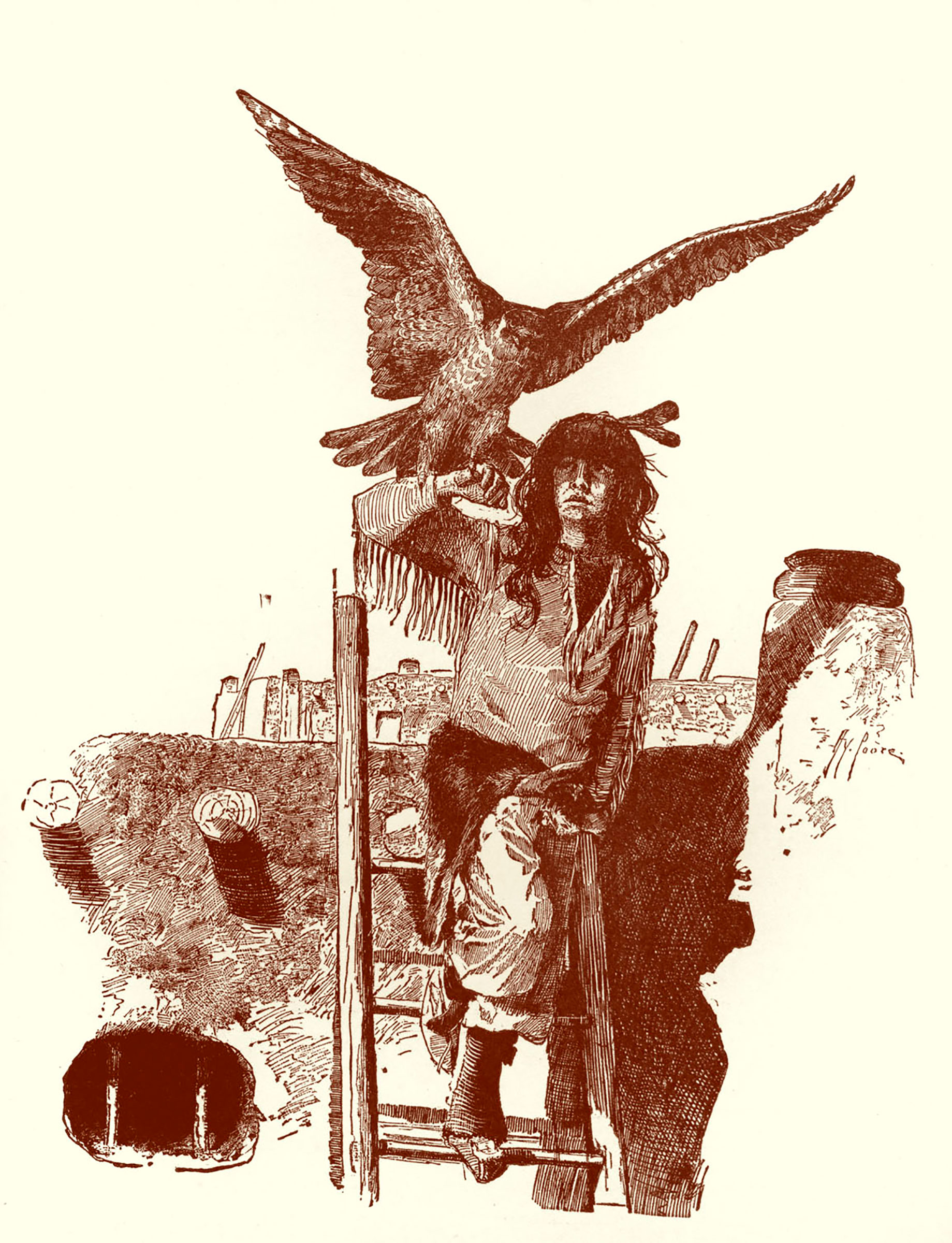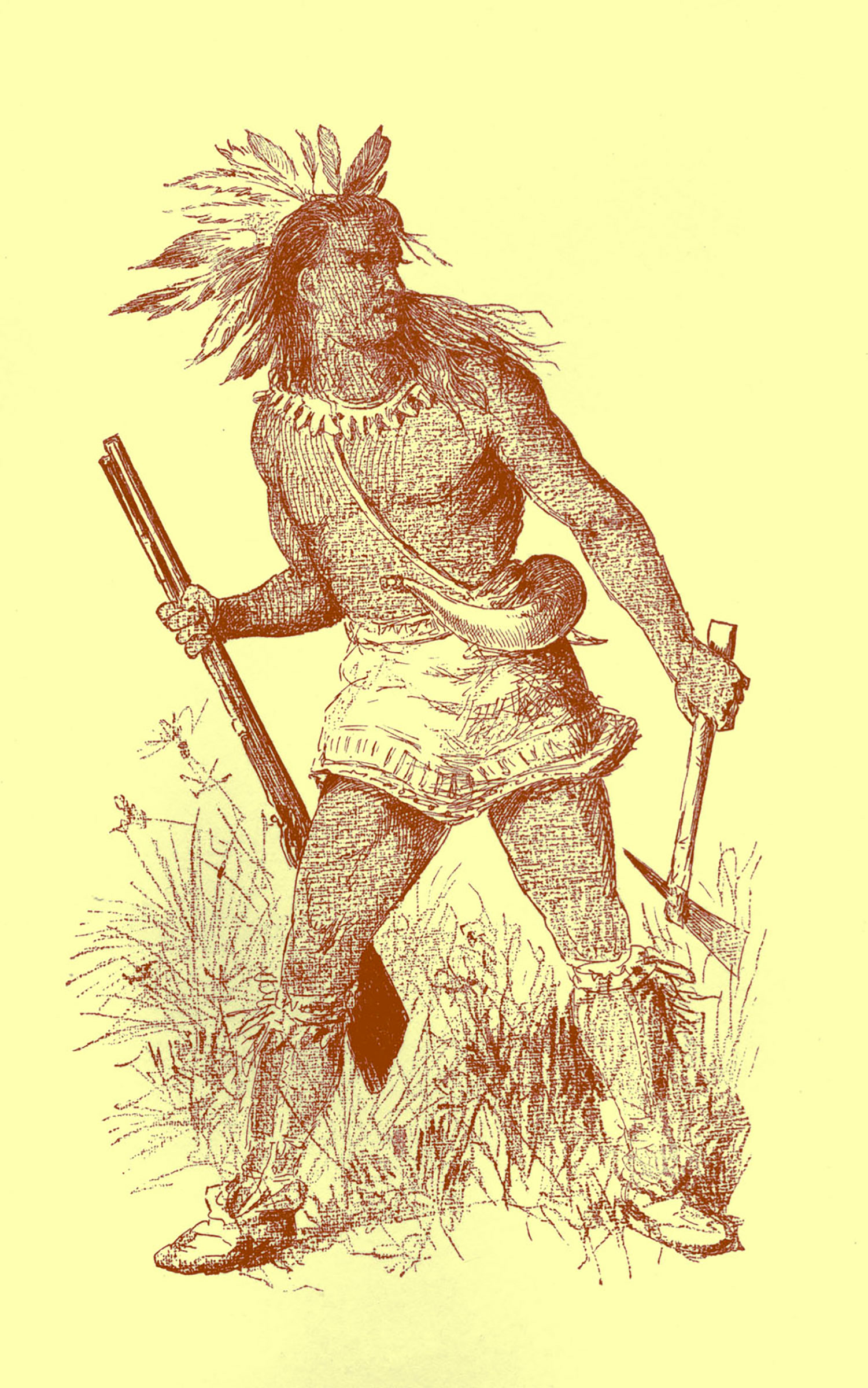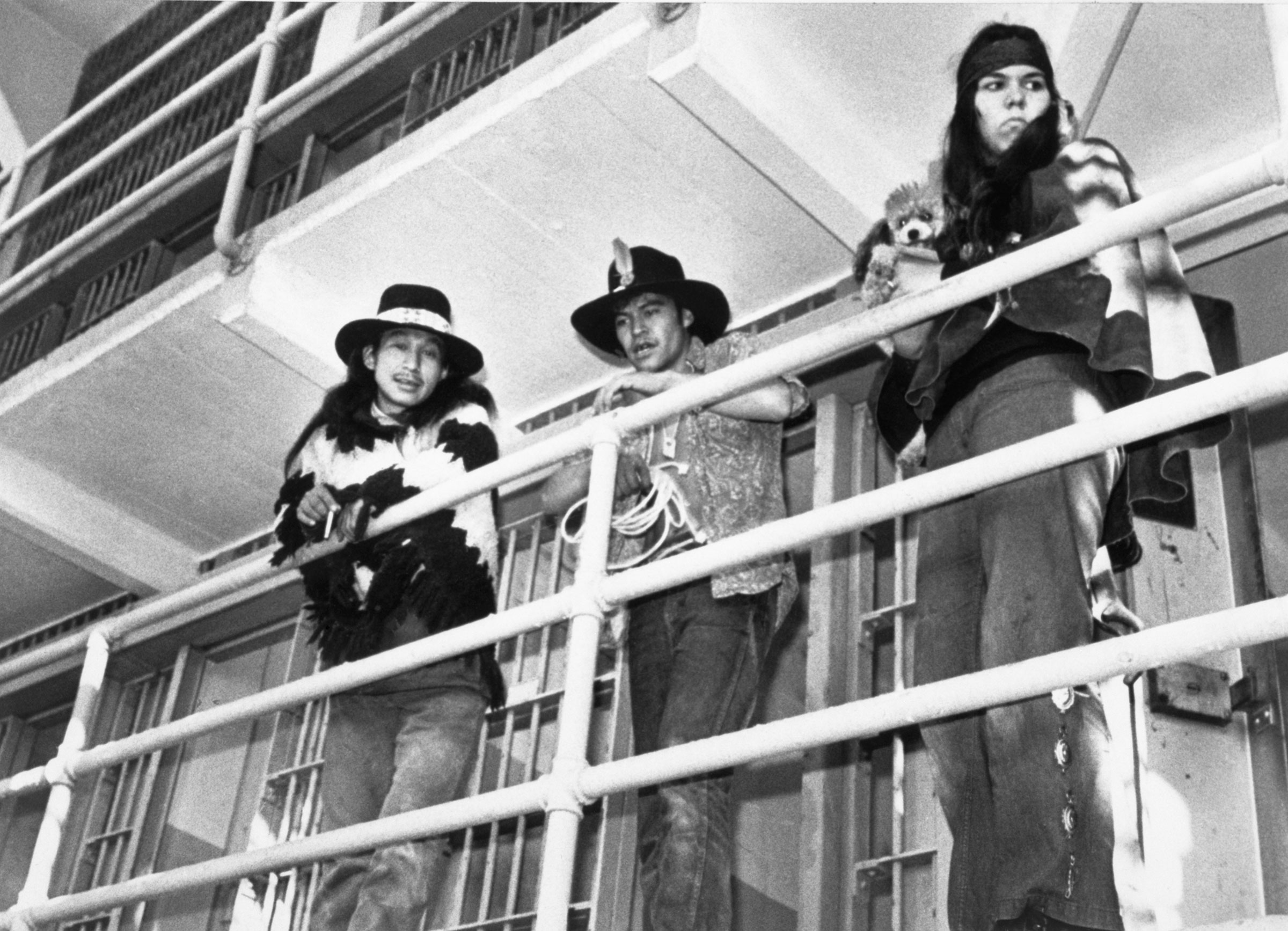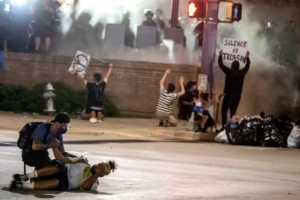As Americans gather for Thanksgiving feasts, they are paying homage to a meal that took place more than 400 years ago between a group of colonists and Wampanoag Native Americans in Patuxet, the area now known as Plymouth, Massachusetts. But that meal arguably means more to Americans today than it did in 1621.
For one thing, only a couple of paragraphs about the occasion exist. Attendees likely ate more seafood than turkey. The meal definitely wasn’t the first time colonists and Native Americans had interacted, and many of those interactions were hostile. Paula Peters, a museum curator and a citizen of the Mashpee Wampanoag, the tribe that fed the pilgrims, points out to TIME that her ancestors “didn’t come to have dinner” in the meal hailed as the First Thanksgiving. They were armed, and “they came because they felt threatened.”
Given all of the myths and misconceptions around the meal known as the “First Thanksgiving,” TIME reached out to experts on Native American history nationwide like Peters to talk about moments in history that hold more significance to Native Americans than the first Thanksgiving. From the plague that made it possible for Pilgrims to establish Plymouth to examples of Native Americans resisting colonial governance, the eight moments highlighted below point to what the relationship between tribes and U.S. settlers was really like throughout American history.
The Great Dying (1616-1619)
European and English sailors brought a devastating plague to the area that would become known as Plymouth colony—known as Patuxet to the original inhabitants of that region, the Wampanoag tribe. Villages from the coast of Maine to the tip of Cape Cod were wiped out by this plague, and tens of thousands of people died. Wampanoag were dying of this illness so quickly that they didn’t have time to bury their own dead, so they just left corpses on the ground. By the time the Pilgrims arrived, there was this cleared space for them to establish a village, however, they needed to sweep away the bleached bones of the dead to establish their colony.

Squanto, who was captured by the English and learned English in captivity, finally comes home to work as an interpreter and finds his family is all dead and gone. It is well-established that tribal communities were here prior to the English coming, and what those communities endured at the hands of these explorers that it wasn’t always this kumbaya experience of “let’s all sit down and have a turkey dinner.”—Paula Peters, a Mashpee Wampanoag historian, author and founder of SmokeSygnals who has curated exhibits about Wampanoag history.
Colonists poison Native Americans in 1623
The modern holiday of Thanksgiving has its roots in the English colony of Plymouth in 1621. In American lore, it was a moment of cross-cultural cooperation and comity. But that feast did not establish an era of goodwill between colonists and Native peoples in eastern North America. More revealing was the eruption, in the spring of 1622, of what became the second Anglo-Powhatan war, which exploded across the Chesapeake.
The English had arrived in North America convinced that their culture was so superior to the Natives’ that the Powhatans, and other Indigenous peoples, would embrace the newcomers and their beliefs. But instead, the growth of the colonial population around the shores of Chesapeake Bay convinced Powhatan leaders that the expansion of colonial farms posed a risk so grave that it could only be repelled by warfare.
A year into that war, during an expedition to rescue captives, colonial soldiers distributed poison to 200 Powhatans even though they knew that doing so violated the rules of war, which had recently been codified in Europe, including in England.
In 2008, the state of Virginia erected a marker on the spot, in Pamunkey territory, with the headline: “Indians poisoned at peace meeting.” The sign notes that the colonists had gone in search of Opechancanough, who had led the uprising in 1622. It does not mention that the English had committed what, using their own standards, was a war crime.—Peter C. Mancall, professor of History, Anthropology, and Economics at the University of Southern California
King Philip’s war (1675-1676)
King Philip’s war of 1675-76 marked when the relationship between Plymouth colony and the Wampanoags finally degenerated into large-scale bloodshed. As King Philip (or Pumetacom)—the son of Massasoit, the Wampanoag leader who held that famous first Thanksgiving with the English—explained, the main complaint of his people was land encroachment: that the English were expanding like Topsy. The English were increasingly prosecuting and fining Native people for trumped-up criminal charges and debt and, of course, accepting payment for those fines in land. Native people struggled to make a living on their shrinking land base, which drove them further into debt. When they had no more land to sell, the English used colonial courts to force them into servitude.
War resulted, leading to the deaths of thousands of Native people and the enslavement of thousands more, including the sale of many of those enslaved people to overseas dominions, like the Caribbean colonies and Gibraltar. The English victory gave them undisputed control of southern New England. They killed King Philip, decapitated and quartered his body and mounted his head outside Plymouth, where the first Thanksgiving had been held fifty-five years earlier. Meanwhile, they sold his wife and son into overseas slavery.
That’s how most of these relationships between the colonists and Native Americans wound up. King Philip’s War was the norm, whereas the symbolism of the First Thanksgiving is a whitewash of Indian-colonial relations. A shared meal is rather missing the point. King Philip’s War is only the best documented of innumerable wars of this kind.—David J. Silverman, author of This Land Is Their Land: The Wampanoag Indians, Plymouth Colony, and The Troubled History of Thanksgiving
Pueblo revolt of 1680

Toward the end of the 17th century, the Pueblos had enough of the Spanish, who had established Santa Fe as a very important trade hub and enslaved Puebloan tribes to build up the colony. In 1680, the Puebloan fought back, surrounding the Spanish New Mexico Governor’s mansion and military buildings and killing Catholic missionaries who were trying to stamp out any semblance of Pueblo and culture. The missionaries would destroy a lot of their material that Puebloan tribes would use for spiritual practices and ceremonies. The Puebloan tribes were successful in driving the Spanish out of New Mexico for a time until the new Spanish governor of New Mexico Diego de Vargas reconquered the territory in 1692.
Some historians call the revolt the first American revolution because it’s a literal revolt against an encroaching government. We focus so much in history classes on the development of the United States on the East Coast, and we forget that there was history happening in the southwest at the same time. We either hear about the American dominating and controlling or we hear about peace-loving natives coming together with Americans. It’s not often the other way around where indigenous peoples win the day. We sometimes miss that indigenous peoples were people. They weren’t just laying around waiting to be colonized. The revolt demonstrates that the people were organizing, and they were coming together in response to colonialism.—Marcus C. Macktima, San Carlos Apache Member (Ndee) and assistant professor of History at Northern Arizona University
Pontiac’s rebellion and the failed reclamation of Fort Detroit in 1763

In 2009, General Motors announced that they would discontinue the Pontiac brand, which had long been a staple of their company since the 1920s. A major part of Detroit’s identity, the car was named after the Odawa war chief Pontiac (Obwaandi’eyaag). Pontiac was born in present-day Detroit around 1720, along the Detroit River. By the late 1750s, Pontiac had been involved in a movement to reclaim British forts throughout the Great Lakes region. In May 1763, Pontiac and his Indigenous allies tried a surprise attack on the British fort and reclaim it. While they took over other forts in the region, they failed to capture Detroit, as the British held them off. After failing to retake the fort, he would leave the area and settle in Illinois Country, where he was eventually murdered.
What is the legacy of Pontiac today? His legacy lived on in Detroit for centuries. In addition to General Motors naming a car brand after him, local politicians like Senator Thomas W. Palmer erected a fictitious grave near current Palmer Park to memorialize the history of Detroit’s own Indigenous warrior. The legacy of Pontiac continues to hover over the city, like a ghost, to remind contemporary Detroiters of their Indigenous past—and present.—Kyle T. Mays, author of An Afro-Indigenous History of the United States
Forced assimilation at the Carlisle Indian Industrial School (1879-1918)

In the mid-19th century, the U.S. government shifted away from overt military warfare towards Indigenous tribes to a program of cultural assimilation. During this time, Indigenous children were rounded up and forced to leave their communities and attend institutions where they were indoctrinated into rudimentary English and forced to perform manual labor. Carlisle is regarded as the first off reservation, federally-funded Native American boarding school in the United States. One of my maternal relatives attended Carlisle, making boarding school history personal to me, as is the case with many contemporary Native people.
Founded in 1879 in Carlisle, Pennsylvania, by Captain Richard Henry Pratt, it was the archetype for subsequent off-reservation boarding schools that claimed to civilize Indigenous children. But these institutions were not real places of learning—at schools like Carlisle, the educational regimen was often very brutal. Indigenous children had their hair shorn, were assigned English names, and were subjected to a “curriculum” intended to divest them of their lifeways. Decades after Carlisle’s founding, in 1934, many of these policies were repealed. Today, there are efforts at the federal and tribal levels to repatriate the remains of Indigenous youth who perished at these schools, and to bring these relatives home.
Despite these brutal “assimilationist” efforts, Indigenous peoples survive today. We’ve got over 560 federally recognized tribes in the United States, and many others that are not federally recognized. We speak hundreds of languages. Learning about this history dispels the misconception that Native people only exist in the past or that we were unable to recover from the boarding school era. Healing is ongoing. Learning about this history also dispels the myth of harmonious and conciliatory relations between settlers and Indigenous nations. Around the time of Thanksgiving—or “Thanks-taking,” as it’s known in some circles—the general public should educate themselves about whose land they’re “giving thanks” on. Who are the original stewards of the land? Do you know who the Indigenous tribes are in your area?—Sarah Whitt is a tribal citizen of the Choctaw Nation of Oklahoma and an Assistant Professor of Global and International Studies who teaches about Indigenous history at the University of California, Irvine
The 1969 occupation of Alcatraz Island

On November 20, 1969, a group of over 80 American Indians landed on Alcatraz Island. Known as the “Indians of All Tribes,” this pan-Indian activist group claimed Alcatraz Island “by right of discovery,” commencing a 19-month occupation. They sought to bring attention to land and treaty rights as well as to the discrimination and living conditions American Indians on and off reservations had to contend with. This occupation occurred during a time when U.S. federal policies sought to assimilate American Indians, break up tribal lands and communities, and aimed to end the government’s responsibility to Native nations, including honoring treaty rights.
The “Indians of All Tribes” harnessed the intense media attention their occupation garnered to educate the public and move people to act. On Thanksgiving 1969, hundreds of Indigenous and non-Indigenous supporters arrived on the island to celebrate and support the occupation. For the first time, televised coverage brought contemporary American Indians into the national spotlight and highlighted the consequences of U.S. federal policy. As Richard Oakes, late IAT spokesman, famously said: “Alcatraz is not an Island. It’s an idea.” He was right. The occupation proved to be an incredibly powerful idea for many Indigenous activists and allies. The occupation of Alcatraz also acted as a catalyst for many more land occupations by Indigenous activists in the U.S. It helped mobilize other pan-tribal activist groups, like the American Indian Movement, that contributed to the Red Power movement of the 1970s. After garnering so much public attention, the occupation also led to fundamental changes in federal policy. In July 1970, President Richard Nixon repealed termination and relocation policies, ushered in a new era: self-determination without termination. Since 1975, the occupation and its legacy continue to be celebrated in an annual Un-Thanksgiving Day/ Indigenous People’s Day sunrise ceremony on Alcatraz Island.—Raquel Escobar, Carolina Postdoctoral Fellow in the Department of History at the University of North Carolina at Chapel Hill
Tribe that fed the pilgrims gets official U.S. government recognition (1987)
On April 10, 1987, the Wampanoag Tribe of Aquinnah (Gay Head) was officially recognized by the U.S. government as an American Indian tribe. The Wampanoags were hardly a new nation in 1987. Wampanoags met the Pilgrims in 1620 and had contact with French and Spanish sailors for a century before that. The Wampanoags were the most powerful people in what is now southeastern Massachusetts and eastern Rhode Island, so, to live there, the Pilgrims had to make a treaty with them. The Pilgrims agreed to help fight the Wampanoags’ Native enemies, and the Wampanoags allowed the English settlement at Plymouth and agreed to help feed and defend it. It was the celebration and renewal of this treaty in 1621 that became known as the First Thanksgiving. For a while, the relationship benefitted both sides. The Wampanoags profited from English trade and increased their regional power. Yet the ever-increasing numbers of English broke the treaty, killed large numbers of Wampanoags, and took most of their land. One community managed to stay together at Aquinnah, the eastern end of the island of Noepe (Martha’s Vineyard). After they painstakingly documented their history there, going back before the Pilgrims, the U.S. Congress awarded them federal acknowledgement (and recognized a related tribe, the Mashpee Wampanoag, in 2007). As a result, after centuries of having their sovereignty eroded, the Wampanoag Tribe of Aquinnah has been able to gain back some tribal land and reestablish tribal governance and operations, including a shellfish hatchery and emergency medical services.—Kathleen DuVal, professor of History at University of North Carolina at Chapel Hill




